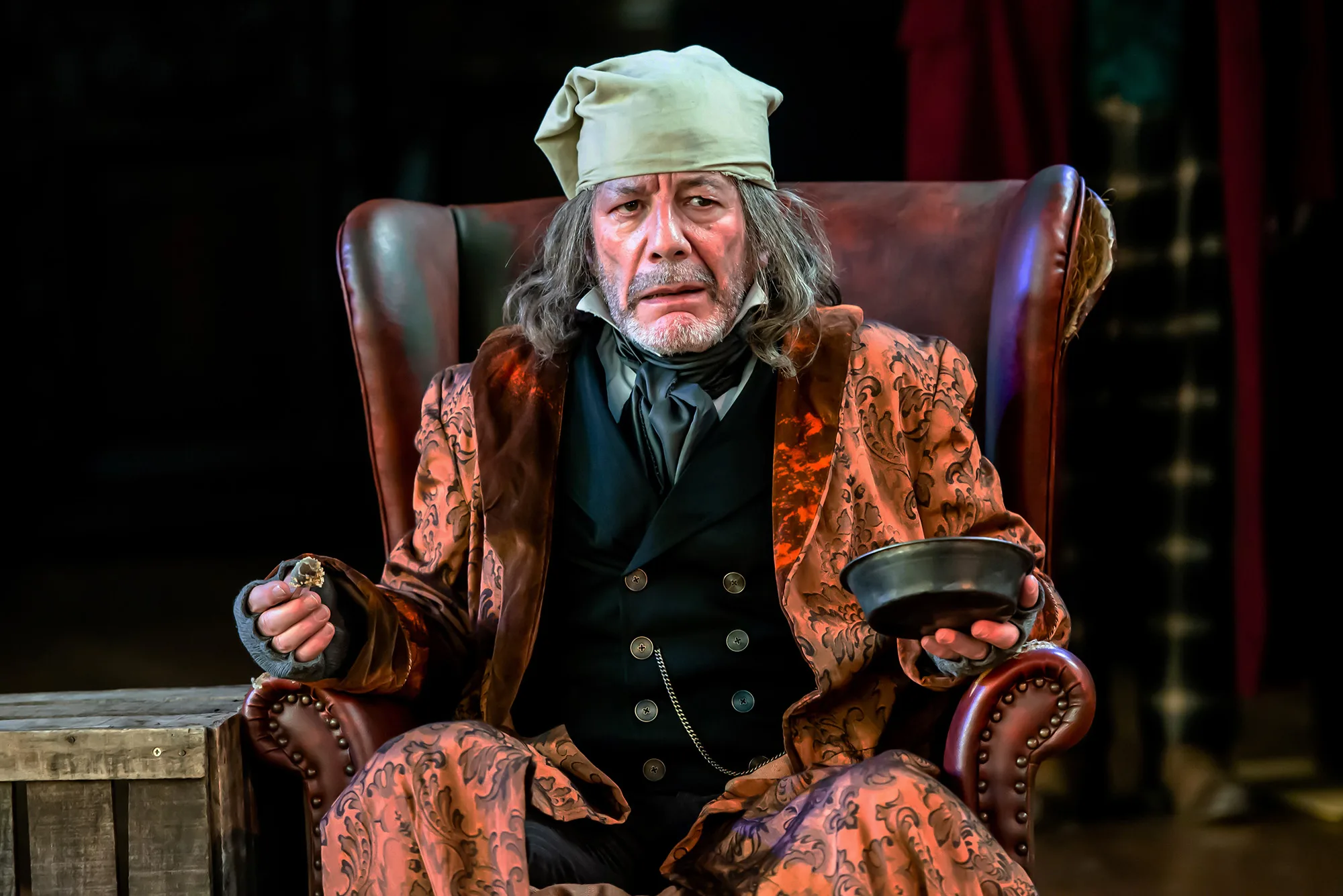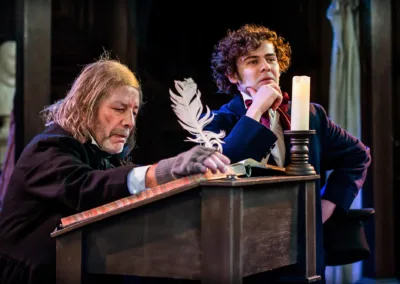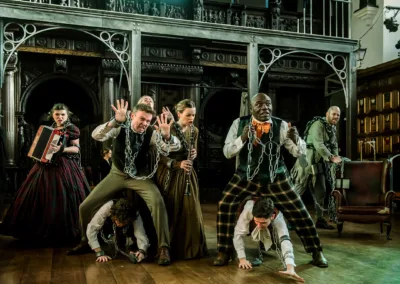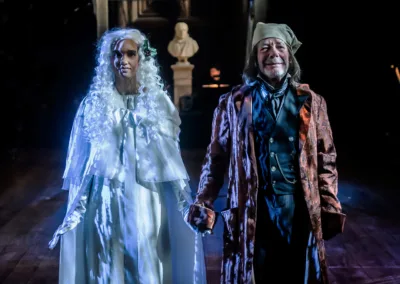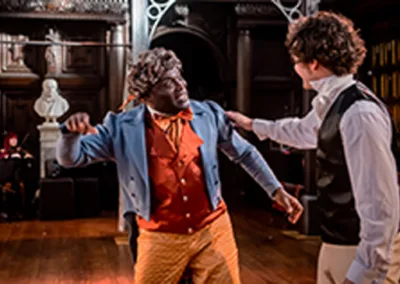
Show: The Loaf
Society: London (professional shows)
Venue: The Jack Studio Theatre. 410 Brockley Road, London SE4 2DH
Credits: By Alan Booty, inspired by a short story by Wolfgang Borchert. Presented by Pogo Theatre Company
The Loaf
3 stars
Alan Booty’s debut play takes us to post-war Hamburg where a couple in late middle age both wake in the night and have a long (just over an hour) chat in the kitchen. It’s an austere, although often wryly funny, exploration of everything which has happened in Germany to bring its citizens to this point by 1947 – the titular small loaf on the table must last until Thursday.
The text never lets us forget where we are. Both actors use strong German accents and the dialogue is studded with German words and phrases, carefully placed so that audience understanding is never compromised. Both cast members are clearly very comfortable in German.
Booty, who plays Hermann, a postman, makes him bombastic, childishly naughty (stealing a slice of bread) with a boyish giggle. He is also pragmatic and there’s poignancy in his having traded a ring of his father’s for four potatoes, two onions and a small bottle of schnapps. Joanna Karlsonn brings a sad stillness to Martha wondering about the fate of her mother, who would be 80 this year, in Berlin. Chemistry between the two actors makes their characters convincing.
There’s a great deal of sharing family memories in this play which works as an exposition for the audience but it’s pretty unlikely that a couple who have been married for 39 years wouldn’t have discussed these things before. Along the way we hear about the people who disappeared in both wars, Hermann’s being saved from serving in 1914, bombed buildings and the 1933-45 regime which frightened them so much. Should they now feel guilty because they kept their heads down and their mouths shut? And what about now when it’s almost a crime to be German at all?
Yes, it’s a play which forces you to think about the plight of ordinary German people when it was all over – not something which has ever received much dramatic attention. The characters are plausible but there’s something about having this conversation at 2.00 am (and the characters do comment on that themselves) which feels a bit contrived. In places, moreover, the dialogue is awkwardly clunky.
Rose Balp has done very well with props though. She personally knitted the slippers using a 1940s knitting pattern and the circular wooden breadboard dates from 1939.










 Emma Bovary – a pretty woman who reads romantic novels and has extravagant dreams – marries a not very competent and not over-bright country doctor, Charles Bovary, which she sees as an exciting escape and a step up from her own humdrum rural childhood. Bovary, generally a decent man, adores her but she quickly comes to view him, and everything he stands for as dull. “He [Charles] had his cap pulled down to his eyebrows, and his thick lips were trembling, adding a touch of stupidity to his face: even his back, his tranquil back was irritating to behold, and in the very look of his coat she found all the banality of the man.”
Emma Bovary – a pretty woman who reads romantic novels and has extravagant dreams – marries a not very competent and not over-bright country doctor, Charles Bovary, which she sees as an exciting escape and a step up from her own humdrum rural childhood. Bovary, generally a decent man, adores her but she quickly comes to view him, and everything he stands for as dull. “He [Charles] had his cap pulled down to his eyebrows, and his thick lips were trembling, adding a touch of stupidity to his face: even his back, his tranquil back was irritating to behold, and in the very look of his coat she found all the banality of the man.” Next week on Susan’s Bookshelves: The Observer’s Book of Music by Freda Dinn.
Next week on Susan’s Bookshelves: The Observer’s Book of Music by Freda Dinn.












